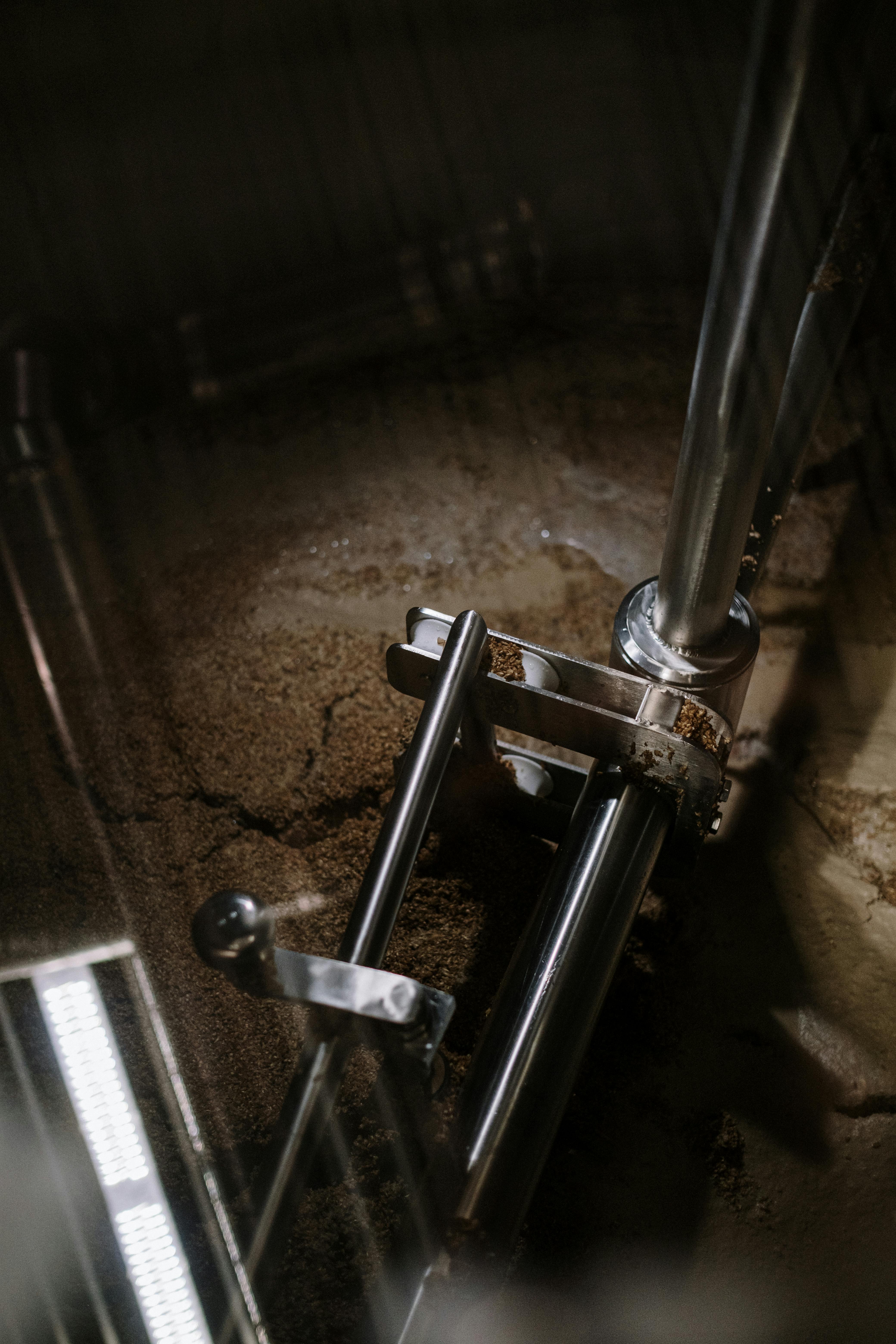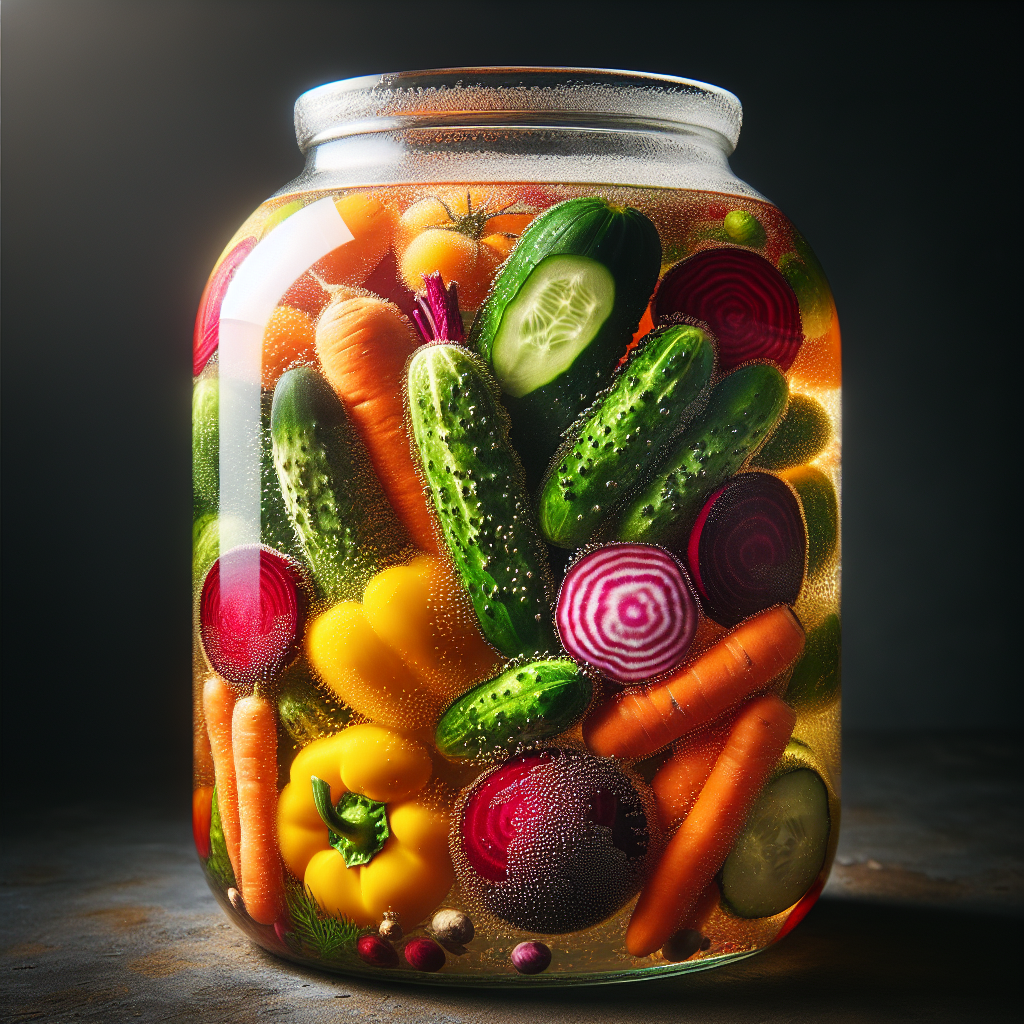In this article, you will explore the fascinating world of fermentation and its role in both preserving and flavoring our food. Fermentation has been used for centuries to transform ingredients and create unique flavors, and now you can learn the science behind it. Whether you’re a cooking enthusiast or simply curious about the magic that happens in your kitchen, this article will provide you with expert tips and techniques to master the art of fermentation. Get ready to unlock a new level of culinary creativity as you delve into the science of fermentation and discover how it can elevate your cooking skills.

The Basics of Fermentation
What is fermentation?
Fermentation is a natural process that has been used for centuries to transform various substances into more desirable forms. It is a metabolic process in which microorganisms, such as bacteria and yeast, break down carbohydrates and convert them into alcohol, acids, or gases. This process is essential in various aspects of our lives, including food preservation, flavor enhancement, and even the production of certain beverages.
How does fermentation work?
Fermentation occurs when microorganisms, such as bacteria or yeast, metabolize carbohydrates in the absence of oxygen. During this process, the microorganism converts the carbohydrates, such as sugars or starches, into simpler compounds, releasing energy. This metabolic process produces various byproducts, such as alcohol, lactic acid, or acetic acid, depending on the specific type of fermentation. The microorganisms utilize the carbohydrates as a source of energy and produce these byproducts as a result.
The role of microorganisms in fermentation
Microorganisms play a crucial role in the process of fermentation. They act as catalysts, facilitating the breakdown of complex carbohydrates into simpler compounds. Different types of microorganisms are responsible for specific types of fermentation. For example, yeast is a key player in alcoholic fermentation, lactic acid bacteria are involved in lactic acid fermentation, and specific strains of acetobacter are responsible for acetic acid fermentation. These microorganisms convert the carbohydrates into various byproducts, resulting in the desired outcomes of fermentation.
Types of Fermentation
Lactic Acid Fermentation
Lactic acid fermentation is a type of fermentation commonly used in the production of various fermented foods. This process involves the conversion of sugars into lactic acid by lactic acid bacteria. It is a prevalent fermentation method in the production of foods like yogurt, sauerkraut, and kimchi. Lactic acid fermentation not only provides a tangy flavor to these foods but also contributes to their preservation.
Alcoholic Fermentation
Alcoholic fermentation, as the name suggests, is the process of converting sugars into alcohol. This type of fermentation is widely used in the production of alcoholic beverages like beer and wine. Yeasts, a type of microorganism, play a key role in alcoholic fermentation. They convert sugars into alcohol and carbon dioxide, resulting in the characteristic flavors and effervescence found in these beverages.
Acetic Acid Fermentation
Acetic acid fermentation is a process that involves the conversion of alcohol into acetic acid, commonly known as vinegar. The microorganism responsible for this type of fermentation is a specific strain of bacteria called acetobacter. Acetobacter converts ethanol, the alcohol found in fermented beverages, into acetic acid through a series of metabolic reactions. This process gives vinegar its distinct sour taste and is also used in the production of other fermented condiments.

The Benefits of Fermentation
Preservation of Food
One of the most significant advantages of fermentation is its ability to preserve food. Fermentation creates an acidic or alcoholic environment that inhibits the growth of harmful bacteria and other microorganisms. This preservation technique has been used for centuries to extend the shelf life of perishable food items. Examples of traditionally fermented foods that have excellent preservation properties include pickles, sauerkraut, and fermented soy products.
Enhancement of Flavor and Aroma
Fermentation plays a vital role in enhancing the flavor and aroma of various foods and beverages. The metabolic activities of microorganisms during fermentation produce compounds that contribute to a wide range of tastes and smells. For example, the tangy flavor of yogurt and the complex flavors of aged cheeses are a result of fermentation. Additionally, the unique aromas found in wines and spirits are also a product of the fermentation process.
Improvement of Digestibility
Fermentation can also improve the digestibility of certain foods. The breakdown of complex carbohydrates into simpler compounds during fermentation makes it easier for our bodies to absorb and digest nutrients. This is particularly beneficial for individuals with digestive issues or those who have difficulties breaking down certain types of food. Fermented foods like sourdough bread and kefir can be more easily digested by people with gluten or lactose sensitivities, respectively.
Fermentation in Food Preservation
Historical background
The practice of fermentation for food preservation dates back thousands of years. It was one of the earliest methods used by humans to prevent spoilage and ensure a stable food supply. Historical records indicate that ancient civilizations, such as the Egyptians and the Greeks, utilized fermentation to store and preserve foods like bread, wine, and dairy products.
The role of fermentation in different food preservation techniques
Fermentation has been used in various food preservation techniques throughout history. The production of pickles, for example, involves the fermentation of vegetables in a brine solution. The acidic environment created during fermentation inhibits the growth of harmful bacteria, extending the shelf life of the pickles. Similarly, sauerkraut is made by fermenting cabbage in a salt solution, resulting in a tangy and preserved product.
Safety considerations in fermented food preservation
While fermentation is a safe and widely-used preservation method, it is important to follow proper safety guidelines during the fermentation process. This includes maintaining clean equipment and ensuring that the fermentation vessels are properly sealed to prevent contamination. It is also crucial to monitor the fermentation process to prevent the growth of harmful pathogens and ensure that the final product is safe for consumption.

Fermentation for Flavoring
The science behind flavor development in fermentation
The flavor development in fermentation is a complex process influenced by various factors. During fermentation, microorganisms break down complex compounds into more simple and flavorful ones. They produce a wide range of compounds, such as alcohols, organic acids, and esters, which contribute to the unique flavors and aromas of fermented products. The specific combination of microorganisms, ingredients, and fermentation conditions all play a role in shaping the final flavor profile.
Commonly used ingredients and flavors in fermentation
Fermentation relies on a variety of ingredients and flavors to create unique and desirable products. For example, fruits like grapes and apples are commonly used in alcoholic fermentation, resulting in wines and ciders with distinct flavors. Spices, such as cloves or cinnamon, can be added to enhance the flavor complexity in fermented beverages. In addition, herbs, vegetables, and even meats are used in the fermentation process to create a wide range of flavorful products.
Exploring new flavors through fermentation
Fermentation provides an exciting opportunity to explore and create new flavors. By experimenting with different combinations of ingredients and microorganisms, individuals can develop unique fermented products with unparalleled taste profiles. From herbal-infused kombucha to fruit-infused vinegars, the possibilities are endless. This creative aspect of fermentation allows individuals to customize their flavors according to their preferences and create truly innovative culinary experiences.
The Role of Microorganisms in Fermentation
Yeasts in alcoholic fermentation
Yeasts are the primary microorganisms involved in alcoholic fermentation. They convert sugars into alcohol and carbon dioxide through a process known as glycolysis. This metabolic reaction generates energy for the yeast cells while producing ethanol, the alcohol found in fermented beverages. Different yeast strains contribute to the distinct flavors and characteristics of different alcoholic products.
Lactic acid bacteria in lactic acid fermentation
Lactic acid bacteria are responsible for lactic acid fermentation, a process that produces lactic acid as the main byproduct. These bacteria convert sugars into lactic acid through a series of metabolic reactions. Lactic acid fermentation is commonly used in the production of fermented dairy products like yogurt and cheese. The lactic acid bacteria contribute to the tangy flavor and smooth texture of these products.
Acetobacter in acetic acid fermentation
Acetobacter is a specific strain of bacteria that plays a crucial role in acetic acid fermentation, the process of converting alcohol into vinegar. These bacteria oxidize ethanol to acetic acid in the presence of oxygen, resulting in the characteristic sour taste of vinegar. Acetobacter is used in the production of various types of vinegars, including apple cider vinegar and balsamic vinegar.
Factors Influencing Fermentation
Temperature and Time
Temperature and time are critical factors in fermentation. Different microorganisms have optimal temperature ranges for their metabolic activities, and maintaining the correct temperature ensures optimal fermentation. Furthermore, fermentation times vary depending on the desired product and the specific microorganisms involved. Longer fermentation periods often result in more complex flavors and aromas.
pH Level
The pH level, which indicates the acidity or alkalinity of a solution, is an important factor in fermentation. Different microorganisms thrive in different pH ranges. For example, lactic acid bacteria prefer acidic environments, while yeasts prefer slightly acidic to neutral conditions. Controlling and adjusting the pH level during fermentation helps promote the growth of desired microorganisms and prevent the growth of harmful bacteria.
Hygiene and Sanitation
Maintaining proper hygiene and sanitation practices is crucial in fermentation. Contamination by unwanted microorganisms can lead to spoilage and potentially unsafe conditions. It is vital to keep all fermentation equipment clean and sterilized before use. This includes fermentation vessels, airlock systems, and any tools involved in the fermentation process. Good hygiene practices help ensure the production of safe and high-quality fermented products.
Fermentation Equipment and Techniques
Fermentation vessels and containers
Fermentation vessels and containers are essential tools in the fermentation process. They provide a controlled environment for the microbes to carry out their metabolic activities. Common types of fermentation vessels include glass jars, ceramic crocks, and food-grade plastic containers. It is important to choose vessels that are non-reactive and easy to clean to avoid any unwanted chemical reactions or contamination.
Airlock systems and their importance
Airlock systems are crucial in fermentation as they allow the release of carbon dioxide produced during fermentation while preventing the entry of oxygen and contaminants. The airlock allows gas to escape through a one-way valve, maintaining a sealed and controlled environment. This prevents the growth of unwanted microorganisms and helps maintain the desired flavors and aromas.
Traditional vs. modern techniques
Fermentation techniques can vary between traditional and modern methods. Traditional techniques often involve relying on the natural microorganisms present in the environment or using starter cultures passed down through generations. These methods rely on time-honored practices and natural fermentation processes. In contrast, modern techniques often utilize specific strains of microorganisms or starter cultures to achieve more consistent and predictable results. Modern techniques also often involve more controlled fermentation conditions.
Common Fermented Foods and Beverages
Sauerkraut and Kimchi
Sauerkraut and kimchi are popular examples of fermented vegetables. Sauerkraut is made by fermenting shredded cabbage in salt, while kimchi is a Korean dish made of fermented vegetables, primarily cabbage and radish. Both sauerkraut and kimchi undergo lactic acid fermentation, resulting in tangy flavors and preserved vegetables.
Yogurt and Kefir
Yogurt and kefir are fermented dairy products. Yogurt is made by fermenting milk with lactic acid bacteria, while kefir is made by fermenting milk with a combination of bacteria and yeasts known as kefir grains. These fermented dairy products have a creamy texture, tangy taste, and contain beneficial bacteria, making them popular choices for their health benefits.
Beer and Wine
Beer and wine are well-known examples of alcoholic fermentation. Beer is made by fermenting grains, such as barley, and wine is made by fermenting grapes. The specific strains of yeast used in the fermentation process contribute to the distinct flavors and alcohol content of these beverages. Beer and wine are enjoyed worldwide and have a rich history dating back thousands of years.
Health Benefits of Fermented Foods
Probiotics and gut health
Fermented foods are often rich in probiotics, which are beneficial bacteria that promote a healthy gut microbiome. Probiotics can improve digestion, enhance nutrient absorption, and support the overall health of the digestive system. Consuming fermented foods regularly can help maintain a balanced gut flora and contribute to optimal gut health.
Enhanced nutrient absorption
The fermentation process breaks down complex compounds into simpler forms, making the nutrients in food more easily absorbable by the body. Fermented foods can improve the bioavailability of vitamins, minerals, and other essential nutrients, ensuring that our bodies can efficiently utilize these nutrients for optimal health and well-being.
Boosting the immune system
Fermented foods also have the potential to boost the immune system. Probiotics found in fermented foods can stimulate the production of antibodies and enhance the activity of immune cells. A healthy gut microbiome, supported by fermented foods, can help improve overall immune function, making the body more resilient against infections and diseases.
In conclusion, fermentation is a fascinating and versatile process that has been practiced for centuries. It plays a vital role in food preservation, flavor enhancement, and the creation of various fermented products. Understanding the science behind fermentation, the role of microorganisms, and the factors that influence the process allows us to appreciate and harness this ancient technique in our daily lives. Whether you enjoy the tangy taste of sauerkraut, the complex flavors of wine, or the numerous health benefits of fermented foods, fermentation continues to shape our culinary traditions and enhance our overall well-being. So go ahead, explore the world of fermentation and discover the endless possibilities it offers!

